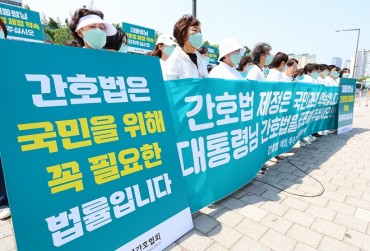SEOUL, Sept. 10 (Korea Bizwire) — In the South Korean film “Microhabitat” released last year, the protagonist Mi-so hits the streets when she is no longer able to afford paying rent for her apartment.
The film was critically acclaimed for featuring a story that reflected the realities of the younger generation, many of whom are losing their homes because of the spiking cost of rent.
More than 500,000 households were found to be living, like Mi-so, in temporary quarters such as motels or saunas that operate overnight in lieu of proper housing.
Experts say that more people in the metropolitan area surrounding Seoul are giving up on living in housing with proper facilities.
According to new figures released by Statistics Korea on September 8, the number of households that were “living in dwellings other than housing” but excluding those living in “officetels” was 506,250, which was a 5.6 percent increase (26,794 more households) from last year.
The nation’s statistical office categorizes dwellings into “housing” and “miscellaneous” (dwellings other than housing).
Dwellings under the “miscellaneous” category include officetels, lodging facilities (hotels, motels), dormitories, social institutions, shacks, greenhouses and others.
In South Korea, an officetel is a multi-purpose building with residential and commercial units, the equivalent of a studio apartment or flat.
Aside from “officetels,” all dwelling types belonging to the “miscellaneous” category are typically sought after by those without access to proper housing.
According to Statistics Korea, the number of households living in housing increased 1.3 percent to 19.22 million households, an increase of 241,000 homes.
The growth rate of those without proper housing (5.6 percent) was more than four times higher than those with housing on the national level. In terms of the Seoul region alone, the situation is even more bleak.
Social critics have said that the reason for the polarization of the haves and have-nots may be attributed to the steep upward trend in housing prices that has continued unabated in recent years.
Because the price of housing is growing faster than income, there are an increasing number of instances where people are willingly giving up on buying a home of their own.
Choi Seung-seop, a civil activist who monitors the real estate market, said that the increase in number of single-person households is closely linked to the rapid growth of the vulnerable group of people lacking proper housing.
“There are a significant number of young people who are living in tiny rooms (gosiwon),” said Choi.
H. S. Seo (hsseo@koreabizwire.com)







